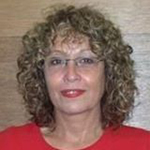By Dr. Sandra Thaggard.

In the wider sense, and especially when in another country, the participants in this study would be classed as Fijians. In Fiji the political and social structure of racial stratification and identification has resulted in classification of these participants as Part-European. There is a need to maintain political sensitivity and integrity for the participants and place the study in the context of such classification. To accomplish this I will trace the origins of the term Part-European by outlining the history of this categorisation and considering the present ramifications.
The first Part-Europeans were descendants of the first white settlers and Fijian women and established themselves mostly in Levuka, Vanua Levu, or other outlying islands. Over the years these descendants intermarried and established kinship ties, so generations are now linked through marriage or bloodlines. They have their own language that is now known as the ‘Part-European language’ (Riles, 1997) and is derived from both English and Fijian, with certain words incorporated into a patois unique to the Part-European culture (Simpson, 1974). This ‘Part-European language’ has its own idioms, a melange of expressions that remain uniquely their own. Many Part-Europeans are also fluent in both English and Fijian and can converse in all three languages simultaneously.
The first Part-Europeans were a distinctive cultural group and very little has changed. Their sense of identity and traditional cultural values are inherited from both ethnic values and belief systems. For example, many Part-Europeans accept without question the value of Fijian herbal knowledge and lore (Kelly, 1966). These beliefs remain today with the majority having great faith in the ministrations of medicinal leaves and massage. Most Part-Europeans will seek out a traditional herbalist as well as, or instead of, Western medicine (Simpson, 1974).
The category label of ‘Part-European’ evolved through Fiji’s colonial past in which they were first called ‘half caste’, to classify the mixture of European and any native race. At this time the term had negative racial connotations for most Part-Europeans and this negativity continues (Osborne, 1998; Simpson, 1974). Over the years the term ‘half caste’ was replaced with PEND, Persons with European Descent, then PMED, signifying People of Mixed European and native Descent until they were officially classified as Part-Europeans in the census of 1956 (Osborne, 1998).
Currently the official census categorises the population of Fiji under the two major racial groupings of either Fijian or Indo-Fijian. Any ethnic group that does not fit into either of these two major racial groupings are classified as ‘Others’. Whilst the term Part-European remains the ethnically symbolic means of identification for people with European and Fijian ancestry in Fiji, Part-Europeans have now been relegated to ‘Others’ in the Fiji census. This ‘Others’, for some Part-Europeans, is a distasteful remnant of the racial overtones attached to the first label ‘half-caste’ (Osborne, 1998; Riles, 1997).
Other expressions are less estranging and emotionally distancing, for example, the Fijian word Kai Loma, which means ‘in between’, is sometimes interchanged with Part-European (Simpson, 1974). Another term is Vasu, but this is not available for common use as it is bestowed directly from and through one’s Fijian maternal line (Riles, 1997). The term Vasu began to be used more readily after independence from Britain and is therefore more familiar to a younger generation that have not lived under Colonialism (Osborne, 1998).
During the early colonial era the British rule of class and colour imposed political and social structures of racial stratification and segregation (Geraghty, 1997) . The Part-Europeans were betwixt and between the indigenous Fijian and the European, with no political authority or influence. The change in classification to Part-European was motivated by the need of the colonial government to combine with this racial group so they could retain political supremacy over the two other dominant racial groups (Fijians and Indo-Fijians).
The colonial administrators used Part-Europeans as interpreters and in minor administrative roles. In these roles they were often buffers to soften the impact of the dominant political position and philosophy of British colonialism (Kelly, 1966). As some Part-Europeans gradually assimilated the language and some of the cultural morays of Europeanism, the Fijians reacted against them as they did against the Europeans (Kelly, 1966). Their close relationship with the colonising power provided an upward social mobility that allowed some Part-Europeans economic opportunities. That these opportunities were not as easily accessible for other races compounded their alienation from their Fijian connections (Kelly, 1966).
ED. Note: In 201, Cabinet approved the Fijian Affairs [Amendment] Decree 2010, which comes into effect forthwith. The new law effectively replaces the word ‘Fijian’ or ‘indigenous’ or ‘indigenous Fijian’ with the word ‘iTaukei’ in all written laws, and all official documentation when referring to the original and native settlers of Fiji. All Fiji citizens are now called ‘Fijians’.
For a list of Kailoma families in Fiji with their country of origin and where they settled in Fiji [ CLICK HERE ].
– – – – – – – – – – – – – – – – – – – – – – – – – – – – – –
Geraghty, P. (1997). ‘The ethnic basis of society in Fiji’. In B. Lal and T. Vakatora (Eds.), Fiji in transition: Research papers of the Fiji Constitution review committee (Vol. 1, pp. 1-23). Suva: SSED, USP.
Kelly, D. L. (1966). The part-Europeans of Fiji. Unpublished Master of Science in Geography, Victoria University, Wellington, New Zealand.
Osborne, G. (1998). Kai Loma: An exploratory study of the ethnic identity among young Part-Europeans in Fiji. Suva, Fiji: University of the South Pacific.
Riles, A. (1997). ‘Part-Europeans and Fijian: Some problems in the conceptualisation of a relationship’. In B. Lal and T. Vakatora (Eds.), Fiji in transition: Research papers of the Fiji Constitution Review Commission, (Vol. 1, pp. 105-129). Suva: SSED.

There is nothing on the origins of the Patterson family..
Hi Robert, Please contact the list editor here.
I believe my 3x great-grandfather, Thomas Morton, lived at Somosomo with his son, Thomas James Morton, leaving early 1875 for Queensland where he died in June 1875. Is anyone researching the Morton Family please.
I’m very curious of the surnames involved with most Kai Loma families. My family is from the US and we were under the impression our family was of European ancestry in the US. I did a DNA test with other family members and found out we have a Melanesian DNA and now I’m just searching for clues on Kai Loma as a starting place.
Thank you,
K. Smith
I am looking for Mr Robert Evans believed to the Captain Arthur Evans grandfather. His son later came to Levuka and set business in there. Arthur Evans Senior.
I am also looking for information on the ancestors of Arthur Evans. What is your connection to the Evans family?
Hello, I am researching the Morton family, looking for my great grandfathers origins. He was most likely Melanesian based on my fathers DNA results, and caught up in the blackbirding trade. It was said he was Fijian, but some feel he was in Fiji but perhaps not originally from there unsure on that. It was also said he worked in Australia for a period of time in QLD. Please let me know if this may be of interest to you.
Simpson, 1974 is cited several times in the article though unlisted as a source. For those interested Simpson, S. (1974) “The Part-European Community in Fiji”. Published in association with UNDP UNESCO Curriculum Development Project. Published by South Pacific Social Sciences Association, Suva, Fiji. Printed by Mayfair Printeries, Suva, 1974.
Hi, I understand that captain Richard Noall married the King of Samoa’s daughter and settled in Fiji. The descendants from this family still live in Fiji and have contacted me with regard to his connection to St Ives in Cornwall. I have confirmed that is where he came from.
I am writing about my time in Fiji 1967-70 when I was working for the Fiji Govt in Vanua Levu. I regularly travelled aboard the MV Fiji Princess from Suva to Savusavu and return. The captain (skipper) was a part-European ‘Arthur Evans’ who I got to know well and for whom I had great respect.
Any news or anecdotes gratefully received.
Martin Adams, Denmark
Hello there Tina.
I am the great great grand daughter of Captain Richard Noall thru his eldest daughter Emmaline. Yes he did marry a Samoan woman of noble birth but definitely not the daughter of the King.